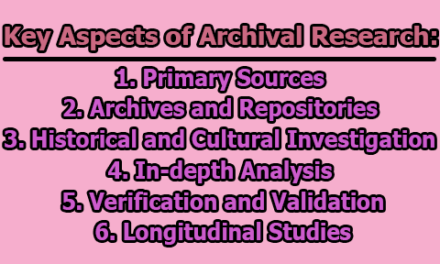Case Study Method
The case study method is a very popular form of qualitative analysis and involves a careful and complete observation of a social unit, be that unit a person, a family, an institution, a cultural group, or even the entire community. It is a method of study in depth rather than breadth. The case study places more emphasis on the full analysis of a limited number of events or conditions and their interrelations. The case study deals with the processes that take place and their interrelationship. Thus, the case study is essentially an intensive investigation of the particular unit under consideration. The object of the case study method is to locate the factors that account for the behavior patterns of the given unit as an integrated totality.
“The case study method is a technique by which individual factor whether it be an institution or just an episode in the life of an individual or a group is analyzed in its relationship to any other in the group.” (H. Odum)
“A comprehensive study of a social unit be that unit a person, a group, a social institution, a district or a community.” (Pauline V. Young)
The case study method is a form of qualitative analysis wherein careful and complete observation of an individual or a situation or an institution is done; efforts are made to study each and every aspect of the concerning unit in minute details and then from case data generalizations and inferences are drawn.
Characteristics: The essential characteristics of the case study method are as under:
- The researcher can take one single social unit or more of such units for his study purpose, may even take a situation to study the same comprehensively.
- To obtain enough information for drawing correct inferences.
- To make a complete study of the social unit covering all facets.
- Try to understand the complex factors that are operative within a social unit as an integrated totality.
- The approach happens to be qualitative and not quantitative. Mere quantitative information is not collected. Every possible effort is made to collect information concerning all aspects of life.
- To know the mutual inter-relationship of causal factors.
- The behavior pattern of the concerning unit is studied directly and not by an indirect and abstract approach.
- It results in fruitful hypotheses along with the data which may be helpful in testing them, and thus it enables the generalized knowledge to get richer and richer.
Advantages: There are several advantages of the case study method, some of them are being:
- To understand fully the behavior pattern of the concerned unit.
- Helps to obtain a real and enlightened record of personal experiences.
- This method enables the researcher to trace out the natural history of the social unit and its relationship with the social factors and the forces involved in its surrounding environment.
- It helps in formulating relevant hypotheses along with the data which may be helpful in testing them.
- It facilitates the intensive study of social units that’s why the case study method is being frequently used, particularly in social researches.
- It helps a lot to the researcher in the task of constructing the appropriate questionnaire.
- The researcher can use different methods such as depth interviews, questionnaires, documents, study reports of individuals, and so on.
- It has proved beneficial in determining the nature of units to be studied along with the nature of the universe. So it is known as the “mode of organizing data”.
- It means to well understand the past of a social unit because of its emphasis on historical analysis, also it’s a technique to suggest measures for improvement in the context of the present environment of the concerned social units.
- It represents a real record of personal experiences which very often escape the attention of most of the skilled researchers using other techniques.
- It enhances the experience, analyzing ability, and skills of the researcher.
- It facilitates the drawing of inferences and helps in maintaining the continuity of the research process.
Limitations: Important limitations of the case study method may as well be highlighted.
- Case situations are seldom comparable and as such the information gathered in case studies is often not comparable. Since the subject under the case study tells history in his own words, logical concepts and units of scientific classification have to be read into it or out of it by the investigator.
- Read Bain does not consider the case data as significant scientific data since they do not provide knowledge of the “impersonal, universal, non-ethical, non-practical, repetitive aspects of phenomena.”8 Real information is often not collected because the subjectivity of the researcher does enter in the collection of information in a case study.
- The danger of false generalization is always there in view of the fact that no set rules are followed in the collection of the information and only a few units are studied.
- It consumes more time and requires a lot of expenditure. More time is needed under the case study method since one studies the natural history cycles of social units and that too minutely.
- The case data are often vitiated because the subject, according to reading Bain, may write what he thinks the investigator wants; and the greater the rapport, the more subjective the whole process is.
- The case study method is based on several assumptions which may not be very realistic at times, and as such, the use of case data is always subject to doubt.
- The case study method can be used only in a limited sphere, it is not possible to use it in the case of a big society. Sampling is also not possible under a case study method.
- Response of the investigator is an important limitation of the case study method. He often thinks that he has full knowledge of the unit and can himself answer about it. In case the same is not true, then consequences follow. In fact, this is more the fault of the researcher rather than that of the case method.
Despite the above-stated limitations, we find that case studies are being undertaken in several disciplines, particularly in sociology, as a tool of scientific research in view of the several advantages indicated earlier. Most of the limitations can be removed if researchers are always conscious of these and are well trained in the modern methods of collecting case data and in the scientific techniques of assembling, classifying, and processing the same. Besides, case studies, in modern times, can be conducted in such a manner that the data are amenable to quantification and statistical treatment. Possibly, this is also the reason why case studies are becoming popular day by day.
Reference: Research Methodology written by C.R. Kothari

Former Student at Rajshahi University










